Keep Your Stuff Dry on Your Next Outing With These Expert-Recommended Waterproof Backpacks
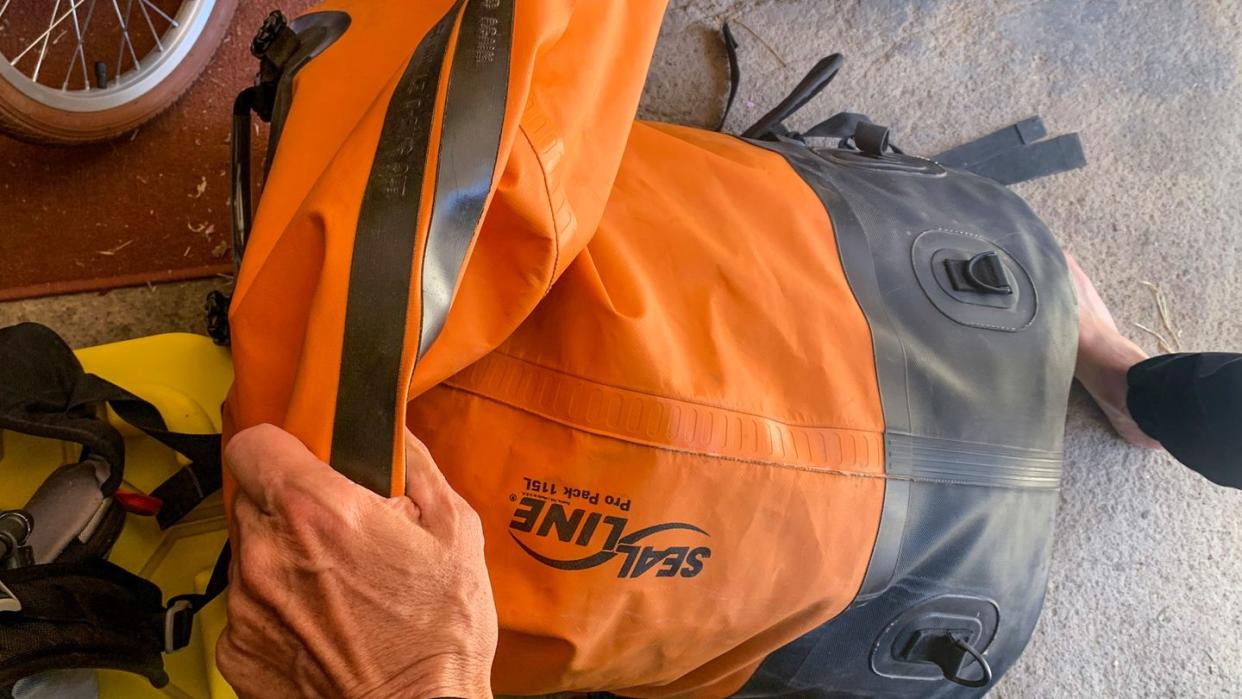
"Hearst Magazines and Yahoo may earn commission or revenue on some items through these links."
Waterproof backpacks are a unique breed of high-tech utility and functional beauty, and an essential for an adventurous life. From running mountains, to urban commuting, to whitewater rafting, a waterproof pack can quickly become a must-have and relied-on piece of equipment when the weather or environment is gnarly.
For these purposes, the separation between waterproof and water-resistant is cavernous. Yes, water-resistant materials and constructions are great, and in many cases they're just fine for a little bit of weather as they repel water, but a waterproof pack takes it a step further by ensuring the contents of your pack stay fully dry, even if the pack is submerged.
To dive in deeper, waterproof means a pack is impervious to water up to a certain depth. Be sure to check your product's IP rating which measures how deep and how long a product can be underwater—it will vary from product to product and brand to brand.
Whether the water you're seeking to avoid comes from a torrential downpour while running the streets of Seattle, sloshing through puddles in New York City, or snowshoeing in Colorado, these packs are guaranteed to keep your gear dry, including tablets, clothing, and sandwiches.
I scoured the market for the best waterproof backpacks, of which there are many, but choosing the Best Overall had lots of competition, with options stacking up for style, construction, and reliability; while Best Value became a difficult numbers game. Everything from industrial design to functionality under pressure was evaluated. In my final roundup, I am confident there is a water-shedding pack here for every possible scenario from float trips to bodega runs.
Best Waterproof Backpacks
Best Overall: Mountain Hardwear Scrambler Pack
Best Lightweight: Exped Stormrunner 15
Best Budget: Marmot Slate All Day Travel Bag
Most Heavy Duty: Yeti Panga Pack
Best for Travel: Chrome Urban Ex 2.0 Rolltop Pack
Best Design: Ortlieb Velocity Pack
Best for Day Hiking: Osprey Transporter Pack
The Expert: As a professional gear tester for more than 20 years, I’ve had the opportunity to see some amazing places. I’ve written for and contributed to various publications, including Backpacker, Men’s Health, Gear Junkie, 5280, and Elevation Outdoors. I started running competitively after college where my passion for hiking and climbing morphed into an unusual love for trail running. I’ve ticked off numerous 10Ks and half-marathons over the years, but now I spend more time on mixed surfaces than road so I can take my kids along for the fun. When I’m not in front of the computer, I’m out on the trails and slopes surrounding my home in Colorado. Find me on Instagram @definitelywild.
Features to Look for in a Waterproof Backpack
Waterproof Versus Water-Resistant
First, determine if you need waterproof or water-resistant. There are recommendations here for both. Backpacks with the waterproof designation are reserved for something 100-percent fully submersible, while water-resistant backpacks are constructed to keep rain and precipitation at bay and contents dry, but not guaranteed to do so. Therefore, waterproof bags and backpacks are the most reliable choice for undeniably wet circumstances like boating, stand-up paddleboarding, or bike commuting in Portland, Oregon, in November.
Haul Your Stuff: Gym Bags • Fanny Packs • Backpack Coolers • Running Belts
Waterproof bags are also preferable for protecting electronics—laptops and tablets, for example—which won’t survive even a light dousing. If you often carry gadgets and there’s a chance you’ll get caught in the rain, opt for more protection. The trade-off for this peace of mind, however, is a bag that typically weighs a bit more and usually includes fewer bells and whistles.
The alternative, a water-resistant backpack, still offers protection from the elements, blocking most moisture but not all. If your cargo is such that it doesn't need full waterproof protection, you can probably get away with something water-resistant. These backpacks are typically more user-friendly than fully waterproof ones because they don’t need to be as heavy duty. They resemble the types of packs you’re probably more familiar with but feature extra reinforcement in the outer shell.
Material
Waterproof and water-resistant materials are almost always a polyester and nylon construction with a durable water repellent finish (DWR). Polyester resists water but can’t block it out entirely because of the way the fibers are woven together, and nylon actually absorbs water unless treated with a DWR or poly coating—and there is an infinite variety of thicknesses and applications.
These fabrics are used as traditional base materials for packs because of their durability and light weight. To make polyester and nylon waterproof or water-resistant, they’re lined with coatings like polyurethane (PU), or they’re accompanied by more protective fabrics like polyamide and polyethylene. Look for these materials in addition to basic nylon or polyester for reliable water defense.
Capacity
One of the most important features of any bag—waterproof or not—is volume: how much it holds. Different capacities serve different needs. If you’re headed out for a lunch run, you’re more likely to grab a small vest than a large hiking pack. Too large a bag for your adventure adds unnecessary weight and bulk on your back, yet too little space means making sacrifices that might have a big impact on your day. How much food and water do you need, how many layers, first aid kit, electronics?
Minimalist running vests range from about 2- to 6-liters, more comprehensive vests up to around 15-liters, day packs in the 15- to 30-liter range, and bags for longer days or overnights can be upwards of 30- to 55-liters. For technical adventures like skiing or climbing, you’ll be on the higher end of those ranges to accommodate additional equipment. But for most nontechnical outings, more than 40 liters tends to be overkill. Colder temperatures and poor weather (probably the main reason you’re looking for a waterproof bag in the first place) also call for a little more space to fit gear and layers.
Closure
Packs use a few tried-and-true systems for opening and closing the main compartment, with zippers and roll tops of various forms the most common. Not surprisingly, the main opening of your pack is also the easiest place for water to get in, so it matters what closure system a bag uses to prevent that from happening.
Waterproof zippers use tape, rubber, wax, and other coatings to keep water from seeping through seams or teeth. They can sometimes be a bit stiff to open and close because of those added elements, so be prepared to apply a little elbow grease if they don’t slide smoothly all the time.
Another common option for waterproof bags is a roll-top closure. The name says it all: simply press the opening flaps together, roll them down tight, usually at least three full folds, and fasten the ends—typically plastic Fastex buckles that attach to themselves or to the sides of the pack or both.
The process seals the layers of rolled fabric, making it impossible for water to weasel its way in. Roll tops double as compression to consolidate space and eliminate air pockets. They’re simple, but opening and closing them takes some getting used to. With roll tops you’ll want to consider putting essentials like your phone and rain jacket in an outside pocket for easy access while hiking until it is time to really batten down the hatches.
Weight
Weight is always a top consideration for runners. As mentioned above, waterproof and water-resistant packs often weigh a bit more than regular bags because of the materials, coatings, and designs that keep out moisture. Most brands try to minimize the trade-off by using lightweight base materials (like nylon and polyester) and limiting features to cut weight. This is one reason why many of these waterproof bags don’t include an abundance of pockets or organizational details beyond the basics. Waterproof packs for commuting and cycling will weigh more than those for running.
How We Selected Waterproof Backpacks
Although I like to get out and run with all of the packs I consider for a roundup like this, it would be fair to say that not all of my waterproof backpack selections are purpose-built for running. In fact, when it comes to waterproof packs, versatility is the name of the game since this probably won’t be your everyday bag. No, these waterproof backpacks are more for those of you heading out all year long, no matter the weather.
In my search, I checked packs that performed well for running, hiking, camping, commuting, and any other adventure where I needed to carry water, electronics, food, layers, gym clothes, and more. I looked for the best brands in the general backpack space as well as my favorites from the top outdoor brands. From rainy runs to soppy bus rides, there’s something for every wet-weather scenario. It just depends on the feature sets you value the most, and those are broken down for you below.
Mountain Hardwear Scrambler 25 Pack
Mountain Hardwear was one of the first brands to make all of its backpacks waterproof, but the materials and technology have evolved over the years. The Scrambler 25 is the brand's latest and most robust offering for a waterproof day pack.
While not technically submergible like a dry bag, it’s water resistant to the point that they are calling it waterproof, and for all intents and purposes, it is, utilizing 4,000-denier, TPU-coated ripstop nylon for the main pack body.
Everything about this pack is thoughtful, from its contoured and ventilated back panel to the flat base design and external pockets and daisy chain. This pack wins my choice for Best Overall handily, not just due to its quality and brand legacy, but also because of its versatile and functional design. If I had to pick one pack, this would be it.
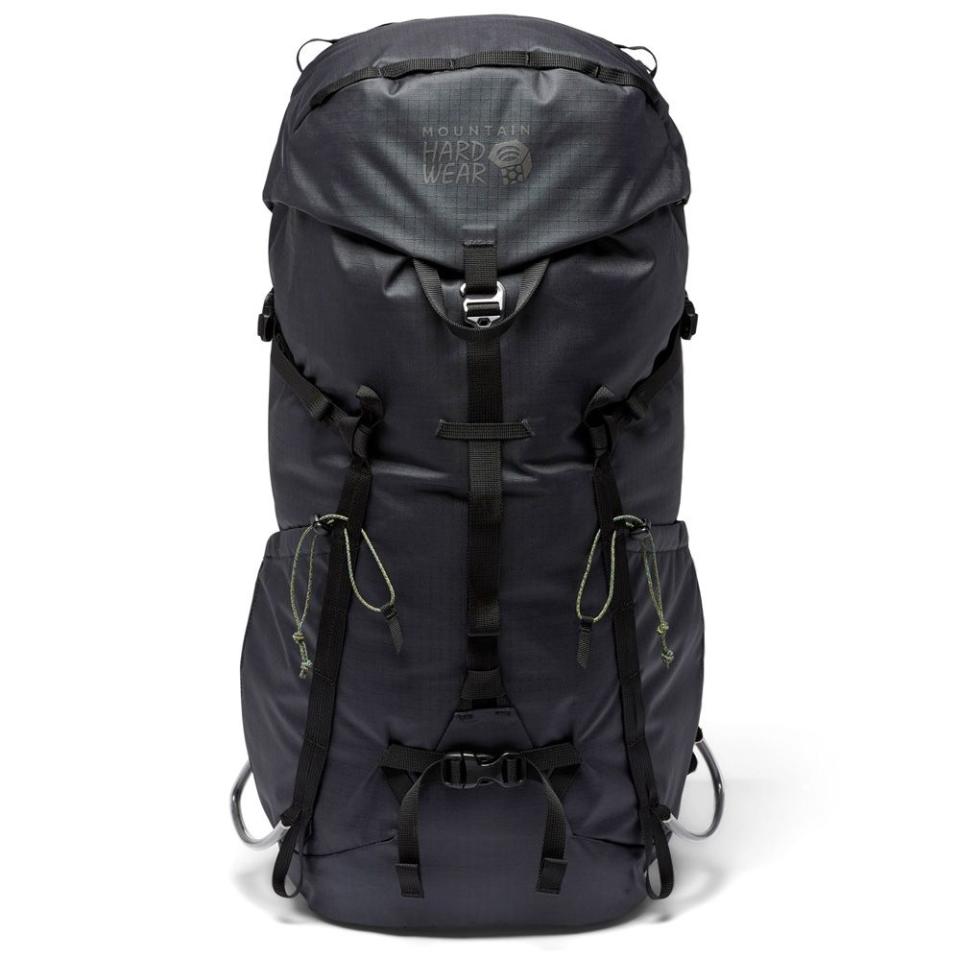
Mountain Hardwear Scrambler 25 Pack
rei.com
$175.00
Stormrunner 15
Exped is famous for its lightweight pack design, and while the brand does make a larger waterproof pack in the Typhoon 25, the Stormrunner 15 is the lightweight, runner-friendly version of the waterproof line.
With 70-denier recycled fabric coated with waterproof polyurethane and taped seams, your essentials are sure to remain dry. Quick release buckles secure a roll-top closure (like a small dry bag) and external compression bungees provide additional jacket storage while on the go. In back is an EVA foam pad and lightweight shoulder straps that will feel very much like an ultra vest, including familiar chest pockets.
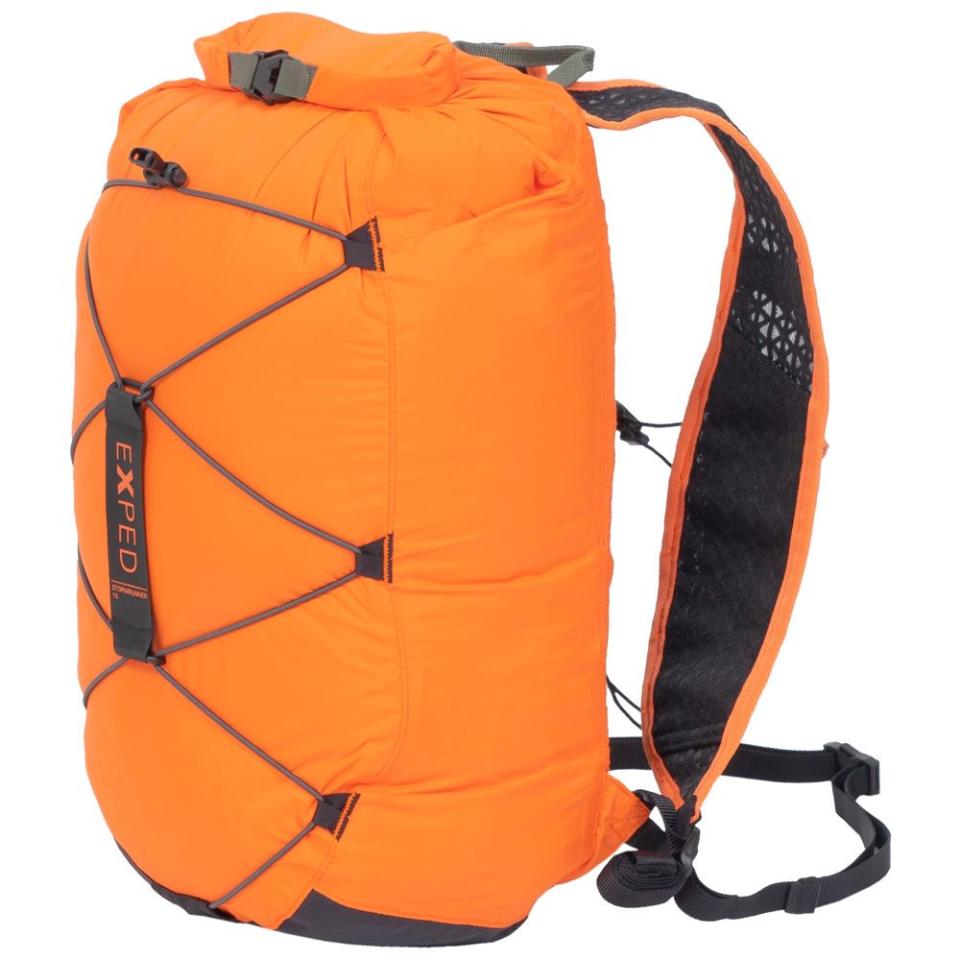
Stormrunner 15
rei.com
$109.95
Slate All Day Travel Bag
I love the simplicity of this waterproof backpack, which makes it ideal for daily commutes or for business travel, no matter the weather or environment. It’s low-profile style travels from the boardroom to the bike shop and carries everything you could possibly need.
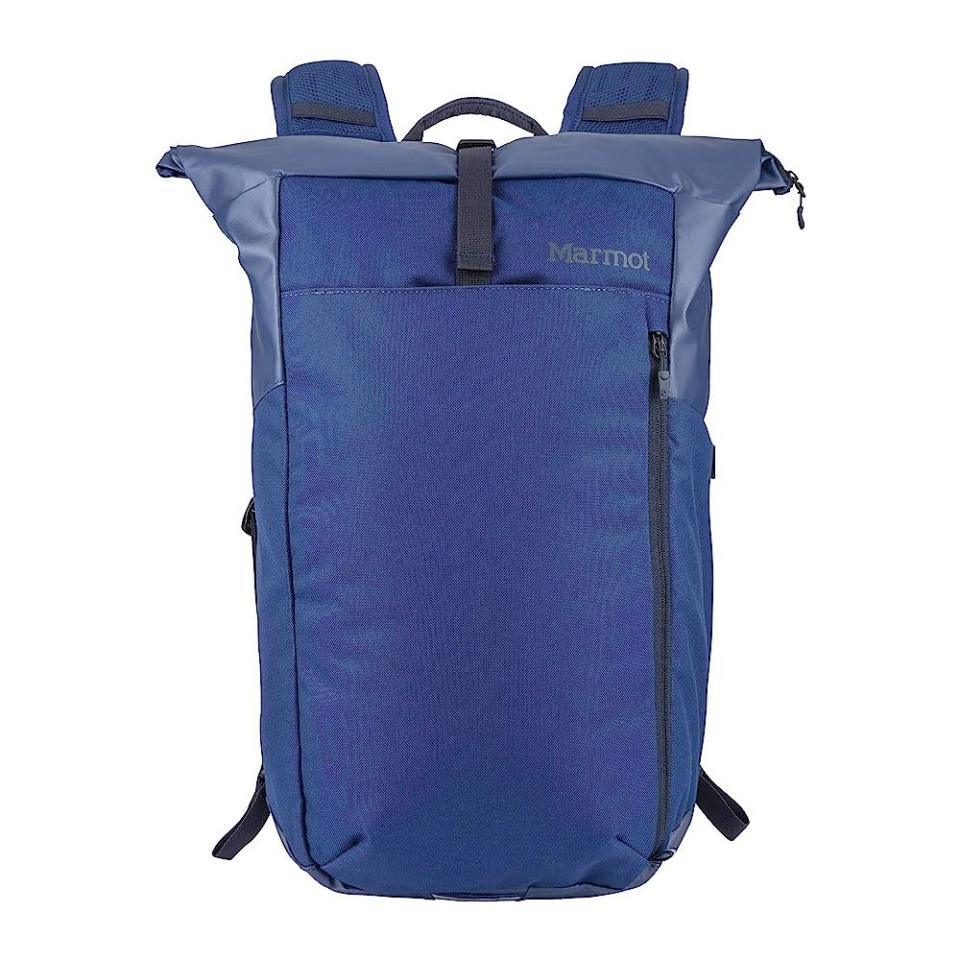
Slate All Day Travel Bag
amazon.com
$56.98
Panga Pack
For me, YETI leads the outdoor consumer market in durability in every category it touches, and this waterproof backpack is no exception.
Although there are plenty of packs that could have been slotted here for Most Heavy Duty, the YETI Panga is also turning heads from the fishing dock to the park with its smart style, in addition to being ideal for transporting any essentials when they need to stay protected and dry.
From ergonomic shoulder straps to bombproof high-density nylon/thermoplastic urethane shell construction, and HydroLok waterproof zippers, there’s nothing quite like this YETI backpack…even if you do have to drop $300.
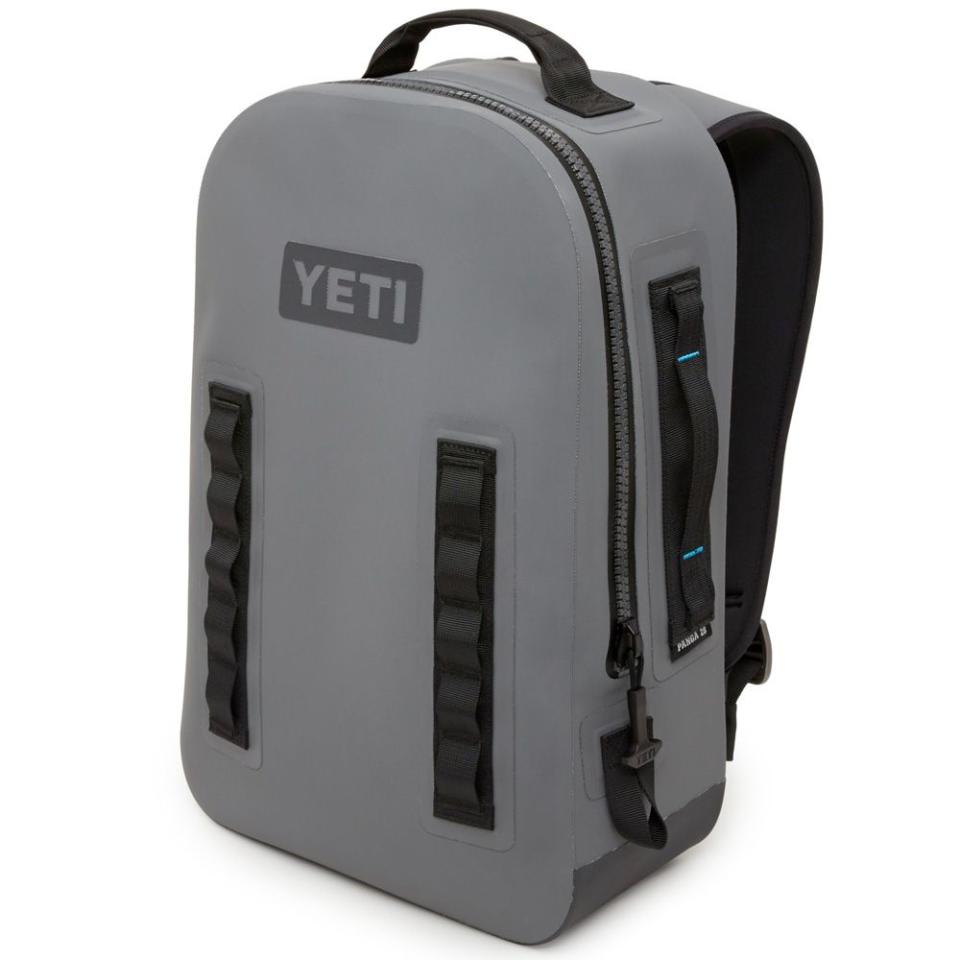
Panga Pack
rei.com
$299.98
Ex 2.0 Rolltop Pack
The Chrome Urban Ex 2.0 is another simple yet effective design, perfect for travel, and any kind of urban movement, from planes and trains to bikes to boardrooms and everything in between.
Chrome got its start in messenger bags, so naturally its designs tend to be ideal for moving quickly from place to place. Dependable welded seams on 600-denier polyester with a polyurethane coating and TPU backing, along with a roll-top closure, ensure waterproofness.
Inside you’ll find 21-liters of volume and a padded laptop sleeve. Its ergonomic shoulder straps and yoke are simple but effective for running to catch a train, hustling down a jetway, or riding like the wind to catch a yoga class downtown.

Ex 2.0 Rolltop Pack
rei.com
$140.00
Velocity Pack
While there are many great, functionally designed packs out there, it can sometimes be hard to argue with classic German engineering like Ortlieb’s. Their bags always stand up as beautifully designed, long lasting, and practical, with thoughtful feature sets—they’re a work of art in many ways. The Velocity is no exception.
Although it may not appear to have many bells and whistles on the outside, it is replete with thoughtful features. The body material is polyurethane-laminated polyester, completely waterproof when used with the bomber roll-top closure. The back panel foam is strong and won’t absorb water. A removable hip belt pairs the pack down for even greater simplicity; and inside is a removable inner laptop sleeve. For runs and commuting, the 17-liter size is perfect.
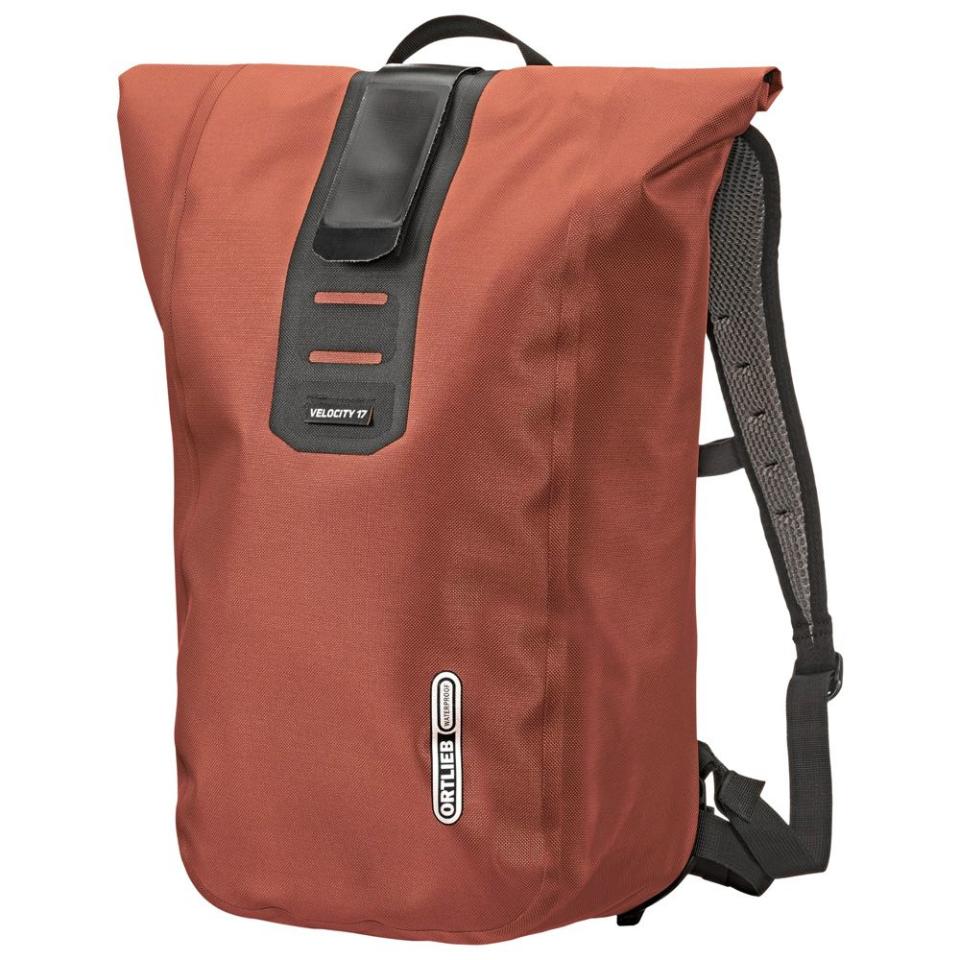
Velocity Pack
rei.com
$150.00
Transporter Pack
Few backpack brands have achieved the level of widespread consumer fandom as Osprey. Part of the cult-following is due to the company’s level of attention to detail in frame, carry, and features, all of which carry over to the new waterproof Transporter Pack.
Despite its “non-submersible” rating, this is still a first-rate waterproof backpack, including a typical roll-top and buckle closure for these types of bags. But on the back, the AirScape backpanel and Spacermesh foam provide quick-drying breathability and Osprey-level carrying support.
The 30-liter version (it’s also available in 18 and 25 liters, for $130 and $165, respectively) features a cool external stretch-woven pocket on the outside and internal organization for small items and a small electronics compartment.
This pack is ideal for waterfall hikes, travel in tropical climates, day trips in the canoe or on the bike, and of course, running in wet weather.
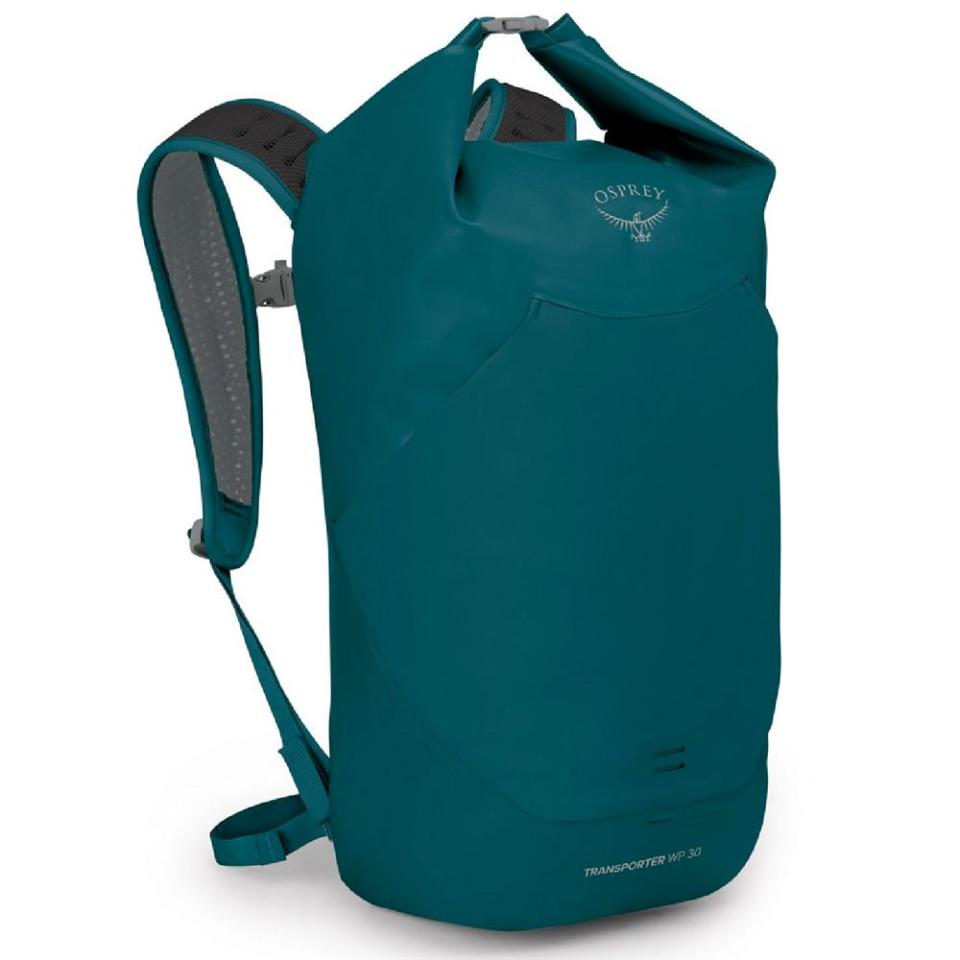
Transporter Pack
rei.com
$190.00
Soak It Up! Waterproof Backpack Buying Tips From Expert Aaron Bible.
How do you know if a backpack is good quality?
Go with a reputable brand—which usually guarantees you’re getting the highest-quality materials, construction, and, more often than not, some version of a lifetime warranty.
Price is another indicator: A good quality pack is not going to be the cheapest pack. It should have some heft to it—the materials, fabrics, buckles, and straps should feel sturdy and well made. The number of features does not make it better, as some cheaper, more gimmicky packs might have a lot of features but not be the highest-quality materials. Fit and adjustability also come into play for larger, higher-quality packs.
Given the choice, do I want bound seams or taped ones?
Most waterproof bags and packs have taped seams, but some styles use bonded or welded seams. When talking about waterproof packs and waterproof garments, the emphasis is almost always on seam taping to achieve waterproofness.
What is the general lifespan of a waterproof backpack?
A high-quality waterproof pack could last a decade or more. If you clean the pack after each hard use, dry it out, keep it out of UV light, and store it in a cool dry place, a good waterproof backpack—given any unforeseen hard wear and tear—should last a long time, even a lifetime.
Unless you are a guide or embarking on a very rigorous trip, where your pack could get torn by rocks, lost down a river, or cut by an ice axe or crampon, it would be difficult to wear a pack out or degrade the waterproofness of a good pack.
What is a dry backpack/daypack and in what scenario would I want one?
A fully dry or truly waterproof pack/bag is typically one that is submersible. This is the type of bag you want when your gear is guaranteed to get wet, such as during a canoe or tubing trip, on a paddleboard or fishing boat, or when canyoneering. It’s the type of bag you want when you can’t chance its contents getting wet (think: sleeping bag, extra clothing, electronics).
What is the most important feature to consider when buying a waterproof bag?
End use. What will you primarily be using the pack for, what problem are you trying to solve? That will dictate your purchase, and it is also why most people have multiple packs.
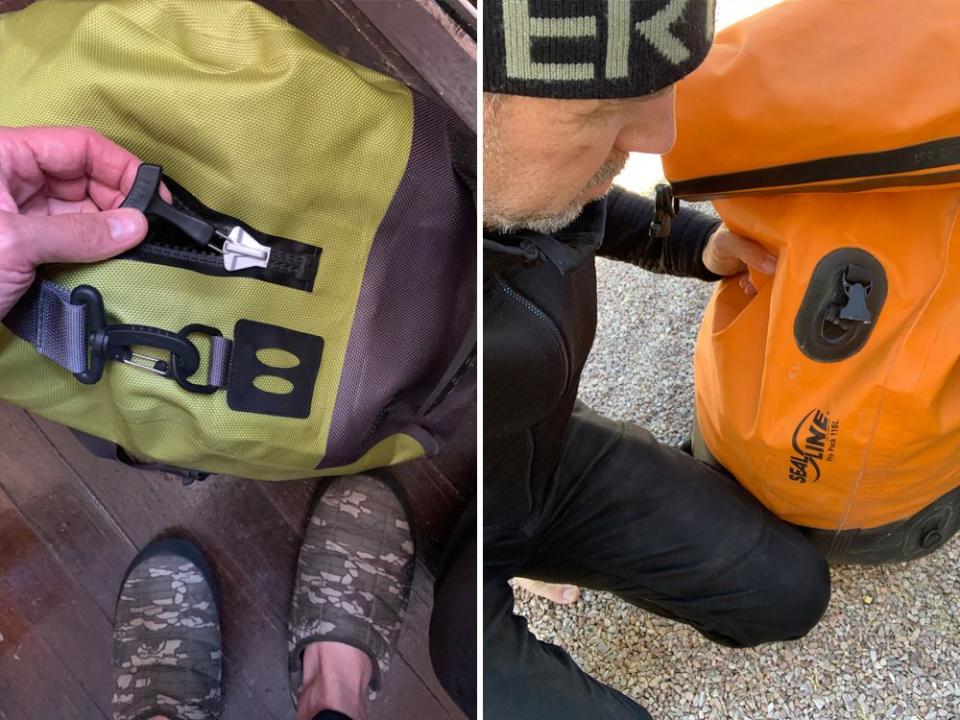
You Might Also Like

